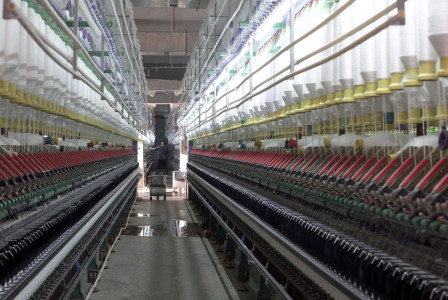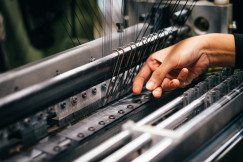Library and support resources
23 September 2025
Economic update - first quarter 2025: EU textile & clothing sector performance
Library and support resources
23 September 2025
Ecosystem's readiness to support EU strategic autonomy and defence efforts
Investments and funding
Social dimension
+14 more
Login / create an account to be able to react
-
33

The EURATEX Economic Update for Q1 2025 reports that the EU Textile and Clothing industry saw declines in turnover and production compared to 2024, driven by weak demand, rising costs, and competition from imports. Business confidence is slightly improving in textiles but continues to fall in clothing.
Topics
Albania
Armenia
Austria
Belgium
Bosnia and Herzegovina
Bulgaria
Croatia
Cyprus
Czechia
Denmark
Estonia
EU-27
Finland
France
Georgia
Germany
Greece
Hungary
Iceland
Ireland
Italy
Kosovo
Latvia
Liechtenstein
Lithuania
Luxembourg
Malta
Moldova
Montenegro
Netherlands
North Macedonia
Norway
Poland
Portugal
Romania
Serbia
Slovakia
Slovenia
Spain
Sweden
Switzerland
Türkiye
Ukraine
Other
Academic / Research and VET Institutions
Business Support Organisation
Company with 250 or more employees
Cultural and Heritage Organisations
Destination Management & Marketing Organisations
EU Institutions
Financial Institutions and Investors
Industry Associations and Chambers of Commerce
International Organisations
Media / Journalist Organisations
National authorities
Networks and Federations / Confederations
NGOs / Non-profits
Notified Bodies
SMEs (a company with less than 250 employees)
Social Economy Entity
-
Transition Pathway's building blocks
-
-
Ecosystem's readiness to support EU strategic autonomy and defence efforts
-
Investments and funding
-
Social dimension
-
Sustainable competitiveness
-
Regulation and public governance
-
-
Industrial ecosystems
-
-
Textile
-
-
Textiles ecosystem areas
-
-
Fibres, yarns and fabrics
-
Apparel and clothing accessories
-
Household/interior textiles
-
Technical textiles
-
Leather and fur
-
Footwear
-
Research and Innovation
-
Technology and Machinery
-
Waste management, reuse and repair
-
Business support and Communication
-
Not area specific (interested in more than one of the above)
-
Share
The ‘Economic Update - First Quarter 2025: EU Textile & Clothing Sector Performance’ published by EURATEX gives a current overview of trends affecting the EU textile & clothing (T&C) industry. It describes how the sector is faring in early 2025, outlining business sentiment, production, trade, employment and the key challenges confronting companies in both textiles and clothing.
Key Findings
- The industry continues to struggle with declines in turnover and production: Textiles saw a ~2.4% drop and clothing ~2.3% drop year-on-year. These declines are especially sharp in woven, knitted & crocheted fabrics and with clothing output, particularly knitwear.
- Weak demand remains the top constraint, compounded by high labour and energy costs, plus labour skill shortages. Rising input costs are squeezing margins as clothing input costs climb while textile prices remain flat.
- Employment levels are below pre-COVID baselines; the workforce faces decline both over the recent quarter and the past year. Structural pressures are causing shrinking employment as well as difficulties recruiting skilled labour.
- On the trade front, imports from third countries have increased sharply, while exports have dropped, resulting in a widening trade deficit for the EU-27 T&C sector.
- Business confidence shows a split: textile firms are slightly more optimistic about production prospects and inventory, but clothing firms are more pessimistic, especially about future orders, exports, and employment.
These findings suggest many EU textile & clothing firms will need to adjust operations, possibly by cutting costs, investing in energy efficiency, or rethinking sourcing strategies. Companies may also need to adapt product lines or quality to match weaker consumer demand. Policymakers may need to consider support mechanisms to address labour shortages, high input costs, and to help firms navigate competitive pressures from imports.
For full details and latest figures, view the update on the EURATEX site.
Comments (0)
See also
Small mid‑caps: bridging the gap between SMEs and large companies
- Categories
- Infrastructure Investments and funding R&I, techniques and technological solutions +28 more
The EU’s 2024 Industrial Report reveals green and digital pathways for textiles transformation
- Categories
- Infrastructure Investments and funding R&I, techniques and technological solutions +16 more
The EU Textiles Ecosystem Platform publishes the first Report on Best Practices
- Categories
- Infrastructure Investments and funding R&I, techniques and technological solutions +19 more



